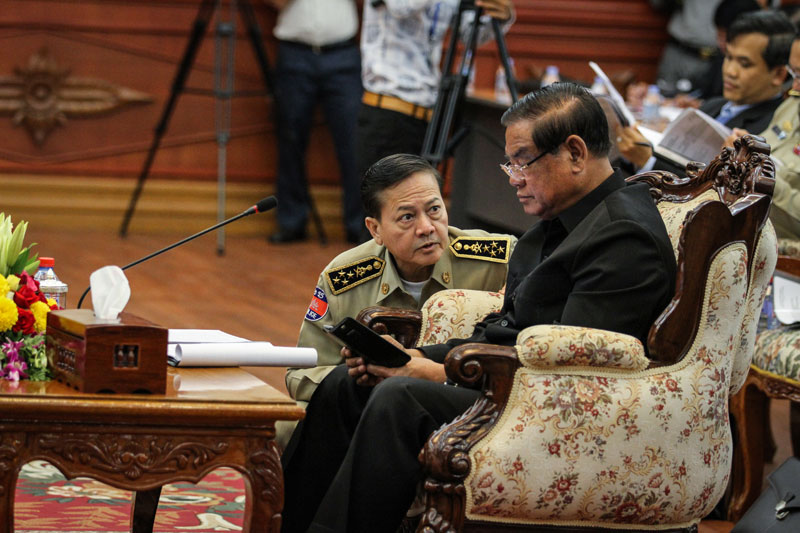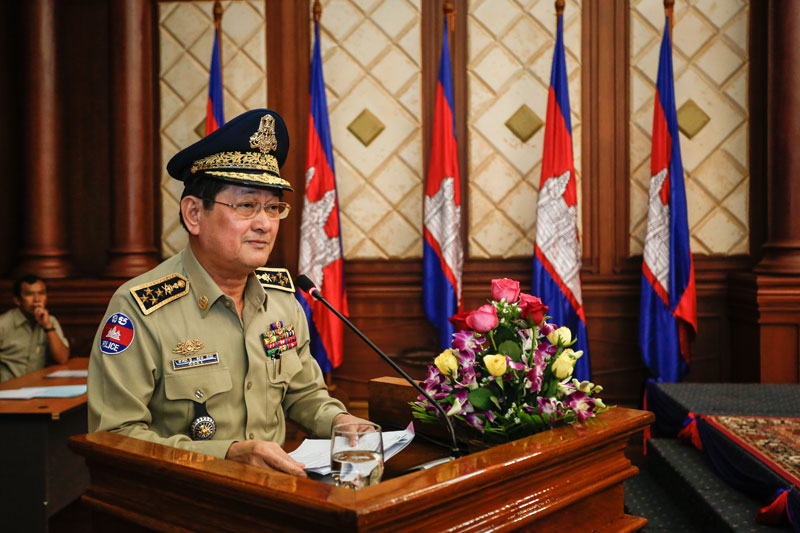The head of the Interior Ministry’s immigration department called on provincial governors and police chiefs on Wednesday to help rein in illegal immigration as the number of Vietnamese migrants doubled over a five-year period.
Speaking at an immigration meeting at the Interior Ministry, Sok Phal, general-director of the immigration department, said the number of Vietnamese migrants in the country had risen significantly since 2009.

“The Vietnamese census from 2002 until 2009 found there were 70,000 Vietnamese [migrants] living in Cambodia,” General Phal said. “[A census] from 2010 to 2014 found more than 160,000 in the country.”
In 2014, the immigration department—established in January last year after being carved out of the National Police—found 1,800 Vietnamese without proper documents, Gen. Phal said.
That same year, the department deported 1,500 illegal migrants, most of whom were Vietnamese, and more have been deported this year, he added.
“In the first six months of 2015, we deported 1,200 illegal migrants; 98 percent were Vietnamese,” he said.
During the meeting, Gen. Phal said his department needed help controlling illegal migrants, especially Vietnamese.
“Please, all provincial governors [and] provincial police chiefs in the whole country, check migrants working in the country, legal and illegal,” he said. “We want to guarantee our immigration law in the country.”
Gen. Phal added that only 20 to 30 percent of Vietnamese were crossing through official international checkpoints, but did not say how the others got into the country.
“A lot of these migrants working in the country have no documents, especially at factories,” he said.
Phat Sarath, immigration chief at the Bavet international border checkpoint in Svay Rieng province—the largest official border crossing Cambodia shares with Vietnam—said many Vietnamese cross there, but most are tourists.
“Most of the Vietnamese migrants do not come to our international checkpoint,” he said. “They come by the border corridors.”

Cambodia’s numerous border corridors can officially only be used by police or military, but locals and migrant workers are often allowed to cross.
Hou Sakun, director of the Interior Ministry’s central department of border police, said he has been ordered to crack down on these crossings.
“But it’s difficult to stop small groups of people trying to cross through the corridor,” he said, adding that his department does patrol the corridors, but it is impossible to constantly monitor them.
“For the six months of rainy season we don’t have the ability,” he said.
In August last year, the immigration department announced both a new foreigner census and a push to strictly enforce a law requiring foreigners to have work permits.
In May, Uk Heisela, chief of investigations at the immigration department, said 1,873 people from 36 countries had been deported since the census began.
On Wednesday, Major General Heisela insisted that the department was not only targeting Vietnamese.
“When we go on operations, we see many Vietnamese because they are in groups,” he said. “But we do all foreigners.”
(Additional reporting by Chris Mueller)



